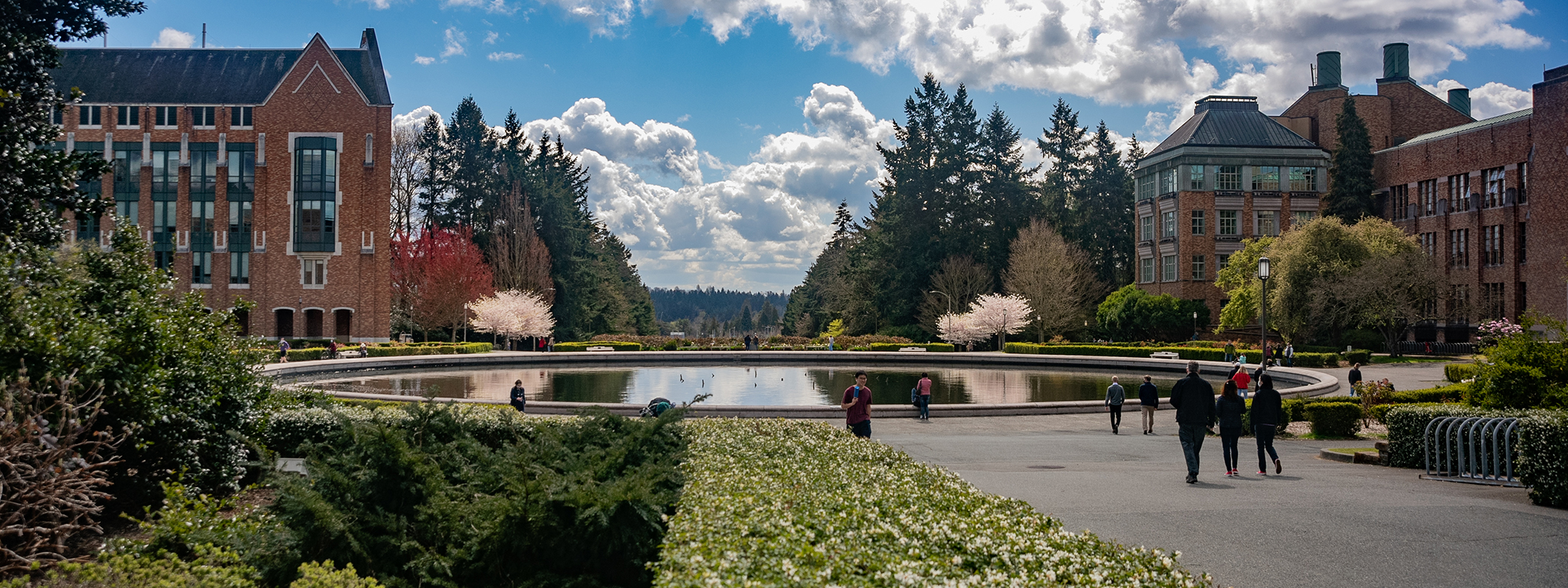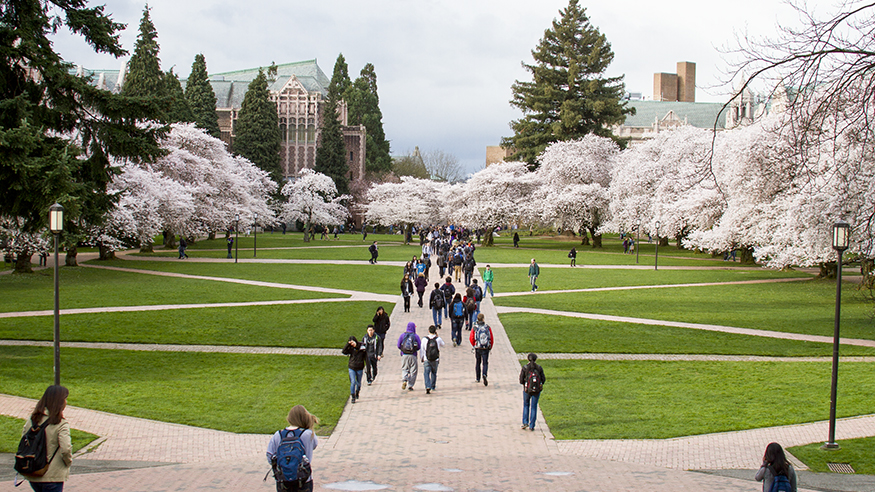
What follows is a reflection about the value of being in community together on a university campus. I hope you will join me in considering this question because I believe so deeply in the importance and in the significance of being together as part of a learning community — a notion that now requires thoughtful consideration. Thank you for reading — Dianne
What does it mean to be here, together, in the shared place we call “campus”? Why are we here, together, now?
Over the past few years and especially during the Covid-19 pandemic, we found that those engaged in higher education could teach, learn, and create alone together, in virtual space. We could gather as a grid of names — sometimes faces as well, but sometimes not — on a screen to share ideas, ask questions, test theories, do science, make art, and think together. The pandemic left us no other choice if we wanted to continue to function as a university.
And then, when it was reasonably safe to do so, we returned to this place that has for centuries served as a locus for learning — the shared place we call “campus,” a word that derives from the Latin for ‘field.’ That field — the campus that historically separated town from gown — once made the university a world apart, allowed it to live outside (or at least on the edge) of the concerns of urban or village daily life.
Universities like ours no longer exist as worlds apart — they haven’t for quite some time — nor should they. There is no field that shelters us from the realities of daily life, nor one that stretches between us and the surrounding city. At our best, we welcome the many intercept points, embrace our surrounding city and region as a place from which we learn and that we endeavor to serve, and for which we commit to making ourselves meaningful partners in improving lives, communities, the planet.
The in-person classroom leaves nowhere to hide. This has been one of its greatest gifts and challenges to education: The sometimes uncomfortable levels of exposure to new questions, to new ideas, to challenging problems...are absolutely critical aspects of the learning experience.
At their core, colleges and universities mostly continue to definitionally pivot around twinned notions of shared physical space and community even as higher education has shifted into various kinds of online spaces and instructional modes over the past two decades. The pandemic rapidly shifted that way of thinking about the university with little warning and without apology.
Two years ago, we returned (have we?) to campus after a period of being forced away from each other. We have returned (have we?) to the intricate collection of buildings that contain our work-a-day lives within a mosaic of tended gardens, a big Red Square, quiet outdoor retreats, an exuberant fountain and the spectacular vista it punctuates. Cherry trees. A quad. We wanted, many of us, to be in spaces together, to traverse the field — to do as E.M. Forster admonished in his novel Howards End and “Live in fragments no longer. Only connect…”1
But have we managed to reconnect? If an informal social contract once provided a shared sense of the collective project that is a university — of the expectations, obligations, and norms as well as a grander vision of what it means to be part of a university community — the social contract seems to have become frayed, less certain, no longer an assured common denominator that underscores our work together.
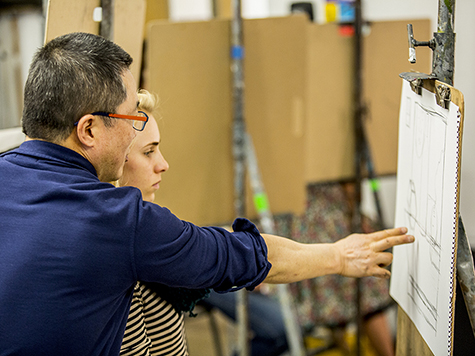
Full disclosure: I believe there is great value — social, cultural, pedagogical and more — in the ongoing project that is the spatially located university community. If that belief is valid, then there is value in working together to continuously reconstitute the loosely formulated social contract attached to higher education as experienced in person, to reinscribe the neural pathways in our brains that may have withered from disuse while the others (needed for Zoom) became overdeveloped. In short, we need to work at this. We need to exercise the muscles in our brains and bodies that help us create and continually reconstitute our university communities. I also fully understand that there are faculty, staff, and student members of our university who for health or other personal reasons may not be able to return to campus for in-person participation, and that they are all important and equally valued members of our community for whom the online environment is both necessary and deeply meaningful as a connecting portal.
Another disclosure: I believe in the power of excellent, truly high-quality education whether it occurs online, in-person, or through some combination of modalities, and I am a long-time advocate for experimentation with digital tools and their affordances in higher education. If we have learned anything from the past few years, it is that there are many pathways to learning and many learners who benefit from hybrid pedagogies and high-quality online courses. Perhaps because of the relative ‘newness’ of online pedagogical modes and technologies, we’ve done a better job of more frequently articulating the benefits of online education however defined, of what can be gained by teaching students in numbers both large and small who are not, maybe cannot, be with us in a classroom.
We’ve recently bothered much less with the work of thinking through or explaining the rationale or the vision for being together on a bricks-and-mortar university campus, sometimes taking for granted its presumed importance or superiority even as online education has become a massive and often successful enterprise. It seems we should be clear about this — we must do this — not just because we invest millions of dollars each year in the maintenance and ongoing construction of the wonder that is the college campus (and ours is particularly wonderful), but also because of the many ways the in-person learning community matters.
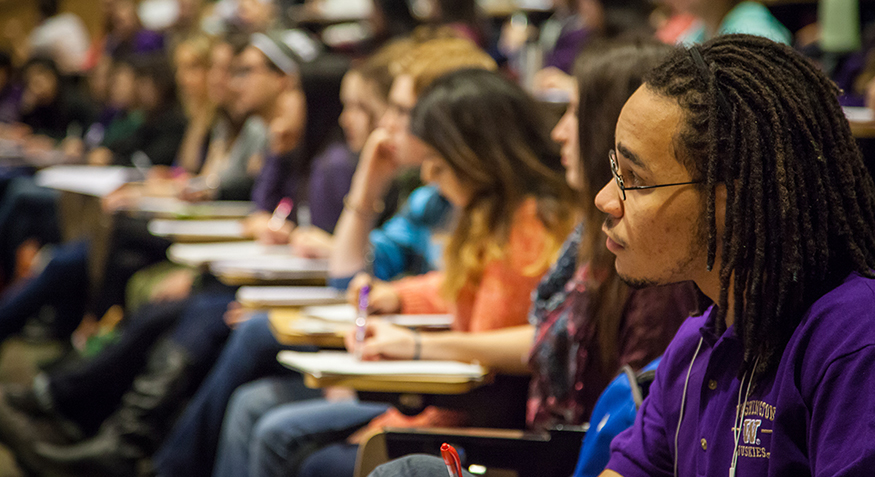
So, what does it mean — after a pandemic so devastating we are only now beginning to understand its lasting impacts on all aspects of our lives — to be part of this university community, with its extraordinary power to convene thousands of learners together, that draws us into classrooms and studios, laboratories and offices where we learn and create; in quads and in squares to celebrate and to protest? What is gained by being together and in person on our campus?
The in-person classroom leaves nowhere to hide. This has been one of its greatest gifts and challenges to education: The sometimes uncomfortable levels of exposure to new questions, to new ideas, to challenging problems — felt in the best of circumstances by both teacher and student alike — are absolutely critical aspects of the learning experience. Being together in a classroom or studio or lab also permits incidental experiences that may be invaluable for learning, such as overhearing an explanation about a theory that occurs between two students or between a student and instructor, watching another student solve a problem, work with new materials, and so on. Sharing space, whether indoors or out, encourages us to consider our responsibilities to one another and to the fabric of the place itself. Being together on a campus and in a classroom full of students is for many a joyful, even wonderous experience, one that still defies my own ability to accurately or completely capture it in words. That it may also be challenging makes it all the more powerful as an educational experience.
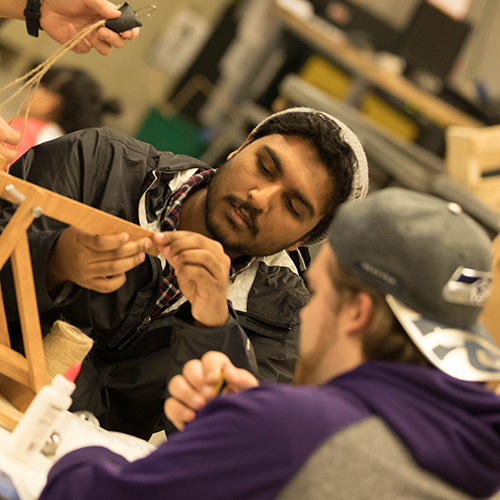
Many have noted that in-person attendance at off-campus activities surged as soon as gathering restrictions waned — for concerts, restaurants, travel — and on campuses, many extracurricular campus activities bounced back as well. Yet, the first flush of excitement about a return to campus in Autumn of 2021 yielded rather quickly to various degrees of both student and faculty equivocation about routinely being back together, and whether the campus offered experiences that are distinctively positive enough to warrant the various kinds of required personal journeys, including the challenges that come with social and classroom interactions (we became unaccustomed to these in a surprisingly short period of time).
For many of our students, the ideal college experience would henceforth include a seamless blend of learning opportunities and experiences that combine the social vitality of an in-person experience with the ease provided by being able to take courses without leaving home. This is understandable, especially for those with long commutes, demanding extramural work schedules, or for many other valid personal reasons including health concerns. But these are nevertheless a changed set of expectations and understandings about how and where we learn, and why a community of learning matters, after spending nearly two years of isolation from each other. This must be acknowledged and accounted for.
As we consider the benefits of being on campus together, perhaps we should also consider what was lost by being apart. We Zoomed without moving from our chairs and met (as the pandemic required us to do) without co-mingled breath. If a student showed signs of distress, one could offer little consolation from behind the illuminated screen. If someone laughed, we could see their smile and hear their laughter as long as no one else laughed at the same time. If we all laughed together, our voices overwhelmed the technology and we heard only silence — and what a tremendous loss that was to lose the sound of a classroom full of laughter.
... I believe place matters, that the self is always shaped in part by the spaces it inhabits, and that the built environment has a profound impact on culture, society, and individuals.
Outside scheduled class time, a constellation of taken-for-granted social interactions instantly vaporized: the informal building of new, multiple, and alternative communities; of networking and the routine opportunity-sharing that is produced through daily interactions in a space; many extracurricular student activities; the spontaneous forming of friendships that happens while packing up a backpack and walking between classes, or from simply hanging out on campus. Forming close mentorships with faculty continued but became more difficult for many students and faculty.
I have devoted my scholarly career to studying the cultural and historical significance of the built environment, so it should come as no surprise that I believe place matters, that the self is always shaped in part by the spaces it inhabits, and that the built environment has a profound impact on culture, society, and individuals. Although it’s true that not all of our campus spaces are what we might wish them to be, even the most basic classroom can nurture a sense of community, just as a quad filled with cherry trees can nurture a sense of wonder, and a campus can provide a sense of belonging to something bigger than ourselves, and offers opportunities for unexpected connection.
In the office I occupy as dean, my work is now punctuated by many daily in-person meetings and weekly gatherings in which we convene to share ideas, address challenges, solve tough problems, and rejoice in the brilliance and accomplishments of the faculty, staff, and students with whom we work. I am greatly enriched by these in-person gatherings with my colleagues where I can more readily gauge their levels of stress, relief, frustration, exhaustion, and joy; where we, too, laugh and even on one recent occasion ended up quite unexpectedly singing together and thus also laughing. Each time we gather, we remind ourselves why we are here — not just in person, but as colleagues who share a deep commitment to the mission that brought us to this work. We can function without being in the same room, but our work together is vastly enriched by our gathering.
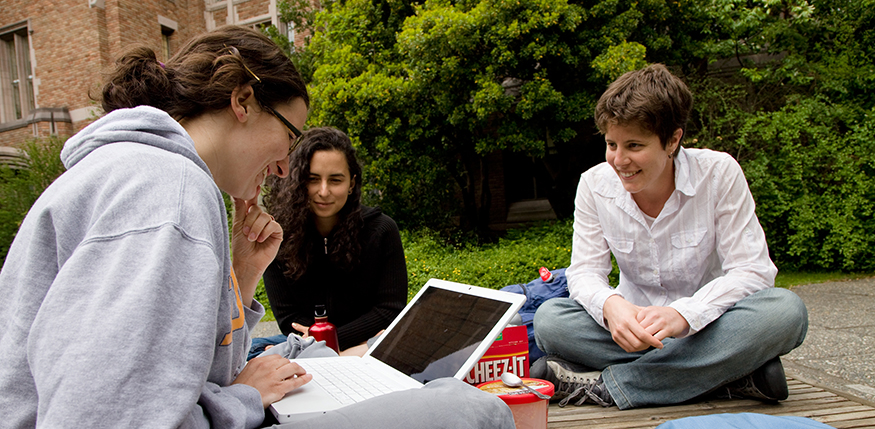
To be sure, there are as many ways to be in community and to build community at the University of Washington as there are members of this amazing, diverse, radiant place. The year ahead will surely offer more opportunities for us to consider them, together, as we seek to connect for the benefit of our students’ education, our research and creative work, and our service to our communities.
Higher education’s in-person future may be an uncertain one. The preferred futures we identify for ourselves for the decades ahead may or may not involve the kinds of bricks-and-mortar campuses we have treasured for centuries. Like so much else connected to our work, the ground is shifting beneath our feet in ways that are both dramatic and subtle. This understanding forms the foundational premise for our Rethinking the Academy initiative in the College of Arts and Sciences and I invite you, once again, to join us in this work, to be at the table when you can be (look for forthcoming announcements about opportunities) so we can think together towards the future we want and need for our students and for our world.
We have an opportunity now, perhaps as never before because of our recent pandemic experience, to think carefully and more intentionally about what it would mean to build on the advantages of higher education as experienced in person. I will also continue to be interested in and to more deeply explore the possibilities and future affordances of higher education online. I will be thinking about these questions in the year ahead, looking for ways to set our community table for the feast that is higher education — there are so many ways. I hope you will join me.
My thanks to Cathy Davidson and Thaisa Way for serving as reviewers and thought-partners on this essay.
1The renowned environmental historian William Cronon used this well-known passage from E.M. Forster in his essay “Only Connect: The Goals of a Liberal Education,” which he first published in The American Scholar, Volume 67, No. 4, Autumn 1998.
More Stories
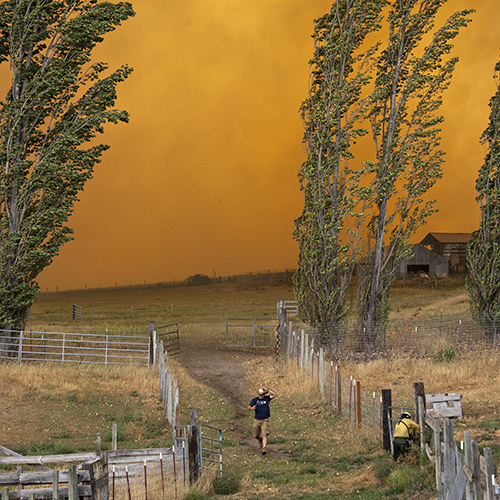
10 Arts & Sciences Stories from 2025
As 2025 comes to a close, we're sharing some of the year's top Arts & Sciences stories.
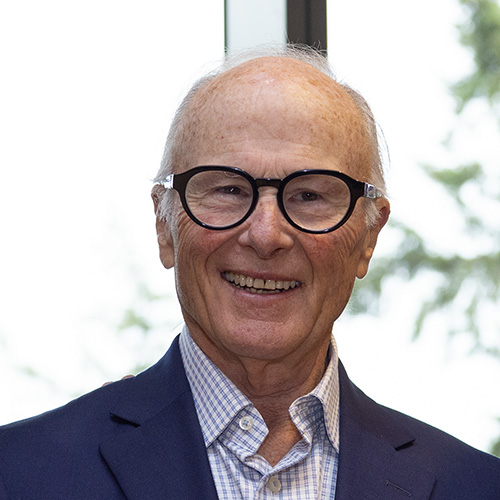
A Transformative Gift for Arts & Sciences
To honor his wife and support the college that has meant so much to both of them, former Arts & Sciences dean John Simpson created the Katherine and John Simpson Endowed Deanship.

A "gesture" to jump-start careers
To prepare students for professional success, the UW College of Arts and Sciences offers “gesture,” a mock startup company where student interns gain skills that employers seek.
